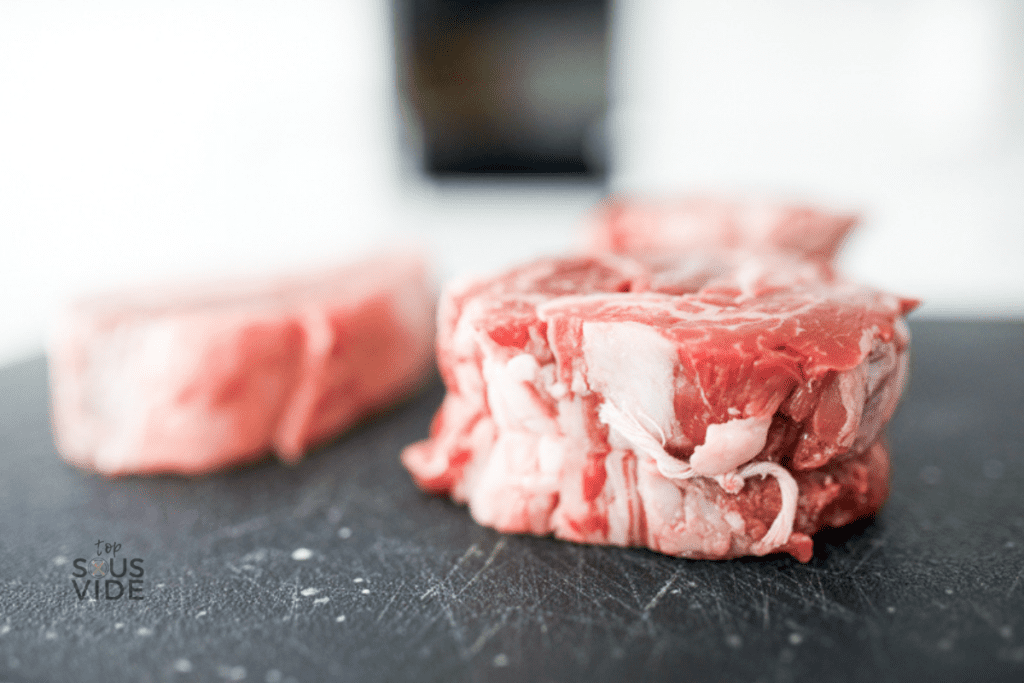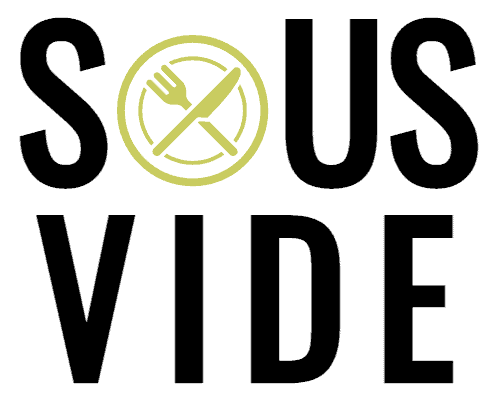Meet the king of steaks. The lesser-known and highly coveted Spinalis Dorsi steak is just as tender and even more delicious than filet mignon. It’s super rare, and you may be familiar with it by the name of Ribeye Cap. My favorite nickname for the cut is Butcher’s Butter.
I had an instructor in culinary school who was so serious about quality cuts that he taught us how to carve out the spinalis ourselves. All so we could experience a bite of this spinalis steak. If I could do the same for you, I would. Seriously, it was that delicious!

You might need to plan a trip to your local butcher to get your hands on this cut, but it’ll be well worth the effort. In this article, I’ll explain what makes the spinalis steak the king of bold, beefy flavor and melt-in-your-mouth tenderness.
Table of Contents
What Is Spinalis Steak? Cut Location
The spinalis dorsi comes from the primal rib area of the cow. It’s the same area that prime rib and ribeye come from. This rare cut is actually the curved top of a ribeye steak, which is the ribeye cap.
The next time you enjoy a ribeye, pay attention to which your favorite bite is. I bet it’ll come from the ribeye cap.

This cut can be challenging to find because it isolates the best, most flavorful part of the ribeye and prime rib cuts. The butcher cuts away the entire cap from a whole ribeye. At this point it’s roughly 16 inches long, 8 inches wide and 1 inch thick, resembling a flank steak. Then the butcher rolls it, ties it, and slices it into ribeye cap steaks.
Spinalis steak comes from the muscle that sits against the cow’s backbone, so it doesn’t see much movement. More weight or exercise on a muscle creates a tough, chewy cut of beef. Since the spinalis comes from a virtually unused portion of the cow, it has an ultra-tender texture.
Marbling and Flavor: Spinalis vs Filet
Looking for the most tender cut of beef? Grab a tenderloin.
The problem with tenderloin is that, while it’s exceptionally tender, it also lacks flavor. This is because it’s very lean and doesn’t have much marbling.
By comparison, the spinalis dorsi is a highly marbled cut of steak. The fat adds the beefy, bold flavor of a ribeye. At the same time, this cut is as tender as filet mignon.

The best part about this cut is that it’s not an objectively “fatty” piece of meat. There’s no chewy gristle to fight through— just tender and tasty marbling.
Highly marbled cuts with a rich fat content create a looser grain in the steak. This is what leads to the tender, buttery texture. Highlight this flavorful and sought-after steak by choosing your cooking method accordingly.
How to Cook Spinalis Steak
Sous vide cooking a spinalis is the surest way to guarantee the optimal rich, buttery, and tender texture. You’ll be able to calculate exactly how long and at what temperature to cook the steak to achieve medium-rare doneness from edge to edge.
Otherwise, it’s an excellent candidate for cast iron pan-searing on the stovetop or grilling. You’ll use high heat to create a tasty, seared crust on the steak’s exterior. Just take care not to overcook it through the center. Remember to use a high smoke point oil.
The marbling in this cut already gives the ribeye cap steak tons of flavor, so you don’t need to marinate it. Exposing this cut to a tenderizing marinade for too long can break down the already loose muscle grain, so you’re better off skipping this step. Plus, you’re paying good money for this cut; you won’t want to disguise its coveted flavor.
Size and Price of Spinalis Steaks
On average, spinalis costs between $42-$60 per pound. So, it’s definitely a “treat-yourself” kind of cut. Eight ounces is considered a typical portion size, which puts it at $21-30 a meal.
For comparison, a filet mignon would typically run you about $30-$40 per pound, or $15-20 a meal. But remember, steaks from the tenderloin aren’t nearly as flavorful as those from the prime rib section of the cow.
You’re paying for an ultra-rare cut that combines all the most coveted sections of the ribeye and prime rib cuts. The price of this cut has to be worth it to the butcher, who will have to adjust the costs of those cuts accordingly.

To put things into perspective, according to The Butcher Shop, “… you can generally get about 6-8 pounds of cap of ribeye meat [or spinalis steak] per steer… [Compare that to] about 12 pounds of tenderloin [where filet mignon comes from], 25 pounds of New York strip steaks, and 26 pounds of brisket per steer.”
Spinalis may be pricey, but with good reason. The texture and flavor are well worth the splurge every now and then. Its exceptional tenderness and beefy flavor make it the steak connoisseur’s favorite for a reason.
Where to Buy Spinalis Steak | Ribeye Cap
If you can find it there, Costco is the most affordable place to buy spinalis steak. I recently picked up a pair of spinalis steaks at my local Costco for $23.99 per pound, but the stock hasn’t been consistent. It’s worth checking your local Costco for ribeye cap to see if they offer this cut at a steal, but you’re likely to have better luck at a local butcher.

Or you could always purchase an entire rib subprimal cut from your local butcher and take it home to carve it yourself. With this cut, you’ll get the entire spinalis which you could use to make your own ribeye cap steak pinwheels. Plus, you can then turn the remaining ribeye into petite ribeye steaks or cowgirls.
If you haven’t had a spinalis steak, you NEED to try it. It’s your favorite bite of ribeye on repeat.
Related reading: Rib Steak vs Ribeye: What’s the Difference?
Ribeye Cap | Spinalis Steak | Spinalis Dorsi FAQs
The rib cap is the same as the spinalis dorsi. Rib cap, spinalis dorsi, deckle steak, ribeye cap, and calotte are just different names for the same rare and highly coveted cut of steak. Butcher’s butter is my favorite nickname.
Although Costco did stop selling ribeye cap steak for a while, it’s back in stores now. Check your local Costco’s Prime Beef selection to see if they carry this rare steak in your area.
The best cut of ribeye steak is the spinalis steak, or ribeye cap. A ribeye steak is a cross section of several muscle groups, the most tender of which is the spinalis dorsi.
Other names for a ribeye cap include: spinalis dorsi, deckle steak, rib cap, and calotte. Butcher’s butter is my favorite nickname.

